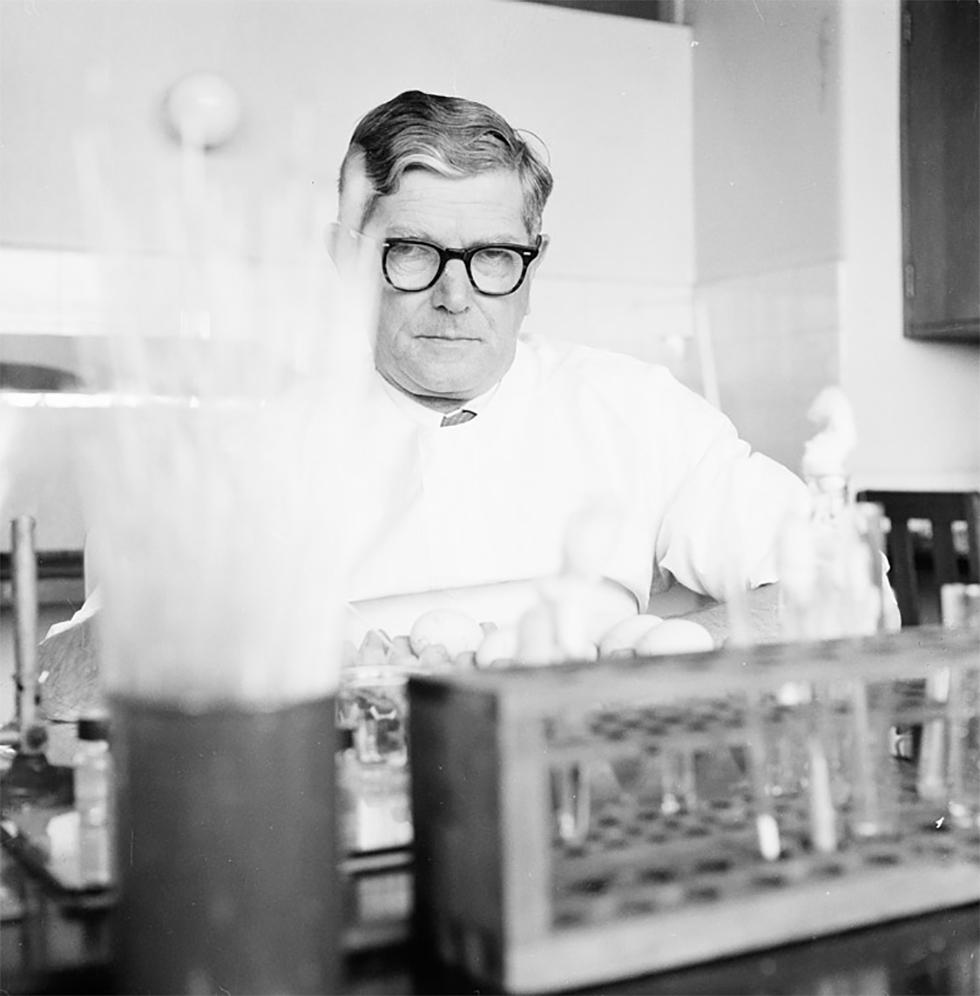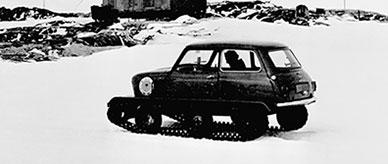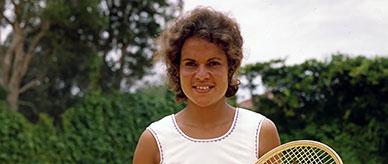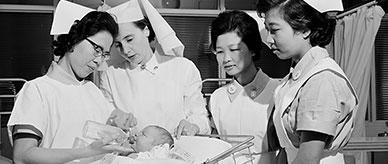


About this record
This black-and-white photograph shows the medical scientist, Sir Frank Macfarlane Burnet. He wears black-rimmed spectacles and a white laboratory coat and he is seen behind a row of test tubes. He is in his laboratory at the Walter and Eliza Hall Institute (WEHI) of Medical Research in Melbourne.
Educational value
- This photograph was taken in 1960, the year Macfarlane Burnet (1899–1985) was awarded the Nobel Prize for medicine, and shows him in the institute of which he was the head and in which he had done his historically important medical research. The Nobel Prize is widely regarded as the most prestigious international prize in the fields of physics, physiology or medicine, chemistry, literature and peace. This prize recognised Burnet as one of the pre-eminent scientists of the time.
- Burnet's award of the Nobel Prize was based on his prediction, in 1949, that if a foreign substance were introduced into an embryonic animal before its immune system had matured, the body would be 'tricked' into accepting it. This 'immunological tolerance' was validated in 1953 by the British scientist Sir Peter Medawar (who shared the Nobel Prize with Burnet), Rupert Billingham and Leslie Brent.
- Under Burnet's directorship (1944–65) the WEHI became one of the leading medical research institutes in the world and the world centre of research into immunology in the late 1950s and 1960s, when it contributed over 50 per cent of the scientific literature on immunology. He began work there as a registrar in 1924 and in 1928 became assistant director after some years working in London.
- Burnet made many important discoveries, in particular his contribution to the understanding of how the influenza virus works, particularly how mutations to the virus, a precursor to epidemics, occur. He also significantly improved the speed with which vaccines can be manufactured. In 1928 he discovered that the deaths of 12 children in Bundaberg, Queensland, after diphtheria vaccinations, had been caused by 'Staphylococcus aureus' (known as 'golden staph').
- Burnet rose to prominence in the 1930s and 40s for his work on influenza and other viruses, and his research findings were published in many journals and several widely read books, including Biological aspects of infectious diseases (1940) and Virus as Organism: Evolutionary and Ecological Aspects of Some Human Virus Diseases (1945), both of which were translated into other languages. He believed strongly in communicating an understanding of biology to a wider public and continued to write and appear in the media throughout his life.
Acknowledgments
Learning resource text © Education Services Australia Limited and the National Archives of Australia 2010.
Related themes
Need help with your research?
Learn how to interpret primary sources, use our collection and more.



